Mossie DK333 "Grim Reaper"
By Wayne Bowman
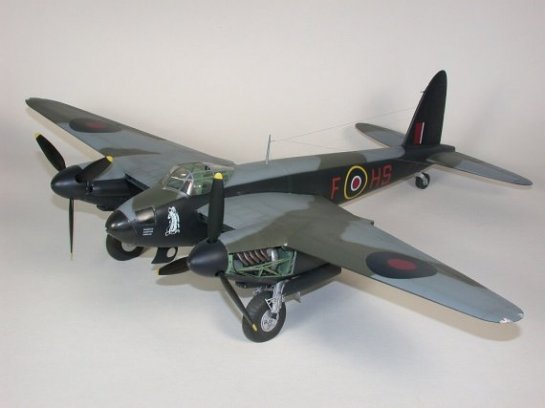
MATERIALS USED
- Kit:
- Revell/Lodello (Mexico) 1/32 deHavilland Mosquito B Mk IV
- Accessories:
- Paragon Canopy, Paragon "weighted" resin wheels
- Ultracast resin 250lb bombs
- Waldron instrument bezels & faces
- Milliput & Tamiya Filler - lots of it!!!!
- Paints:
- Gunze H330 Dark Green, H331 Dark Sea Grey, H77 Tire Black, clear coat & dull coat
- Decals:
- Roundels and Fin Flash robbed from Hasegawa 1/32 Spitfire kit.
- Aircraft Codes (F HS) modified from Aeromaster 1/48 Lancaster sheet
- Numbers and letters for "DK 333" from a 1/72 Xtradecal sheet (to the best of my memory)
- Grim Reaper scanned from hand drawn image & printed on white decal film using laserjet printer
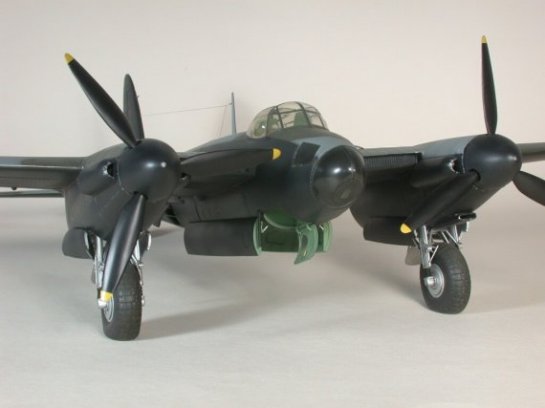
PREAMBLE
I actually built this model a number of years ago but I didn't have any good photos of it. As Santa was nice enough to bring me a new digital camera for Christmas, I thought, "what better subject to play with my new toy".

CONSTRUCTION NOTES
Positive Elements
- general outline of airframe looks pretty good.
- given the size of the model and span of the wings, the insertion "pocket " for attachment of the wing to fuse produces a very strong joint
- Paragon wheels are well cast, and vac-formed canopy fits well and is a huge improvement over the kits transparency
- The SAMI Modellers Datafile is excellent and I highly recommend it

Negative Elements
- raised panel lines
- sizeable gap between wing and fuse at wing insertion point
- cockpit detail ranges between sparse and non-existent
- cockpit/bombardier compartment floor does not extend far enough forward and sits too high.
- large gaps at nacelle to wing joints
- virtually no detail provided in wheel wells
- bulkhead missing at aft end of wheel wells
- aft engine bulkhead is too far forward or removable engine access door cut out, extends too far aft (not sure which is the case)
- the unique "concave" curvature of the aft nacelle skins is not represented by the kit
- the kit transparencies are a write off (wrong shape, and about one scale foot thick)
- kit engine is very rudimentary
- kit engine bearer is inaccurate
- the markings (at least in my Lodello kit) are self adhesive "stick-ons" (I kid you not)
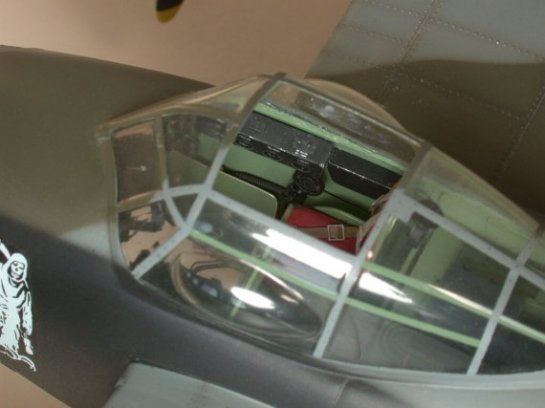
Scratch built additions and corrections
- rescribed all panel lines as appropriate (owing to its primarily bonded wood construction, there are not too many panel lines to scribe)
- some additions to engine (i.e. plumbing and such)
- scratch built engine bearer for port engine
- added some detail to landing gear bays including adding aft bulkhead, oil reservoir on forward bulkhead, aft door retraction cables/springs, miscellaneous pluming, etc.
- scratch built complete cockpit interior (including bombardier's position
- which is not really visible owing to the blacked out transparencies, but what the heck, I know its there!!!)
- scratch built instrument panel using Waldron instrument bezels and faces
- opened up and detailed interior surface of crew access door.
- opened up and scratch built bomb bay area and door interior faces
- opened up and detailed the starboard, aft fuselage access door
- added Paragon Vac-formed canopy. (cut out upper canopy access hatch)
- vac-formed nose transparency (first try at vac-forming)
- added stretched sprue antenna wire
- the Grim Reaper graphic was hand drawn by my lovely and talented wife (because her husband has absolutely no artistic ability) from a 3/4-view photo of DK333, with the outline of the figure shaded in black. The drawing was scanned, reduced to the appropriate size, and printed on white decal film. The graphic was then cut out, retaining a bit of the black border to blend into black of the fuse.
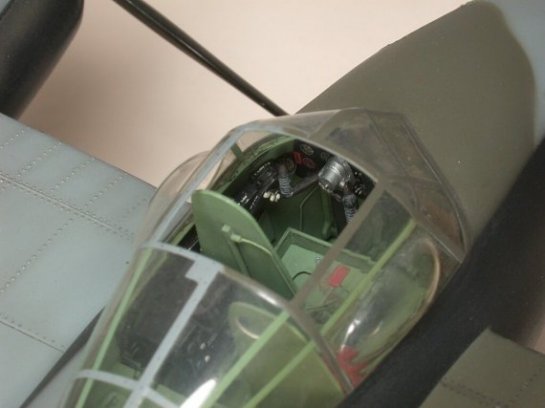
Weathering
- oil wash for panel lines and interior of doors
- drybrushing in cockpit and bomb bay
- paint chipping/wear in known metallic areas using silver prismacolour pencil, and Testors metallizer applied very quickly before is dries with a fine tip brush (being careful not to put "metal chips" on wooden areas of the airframe)
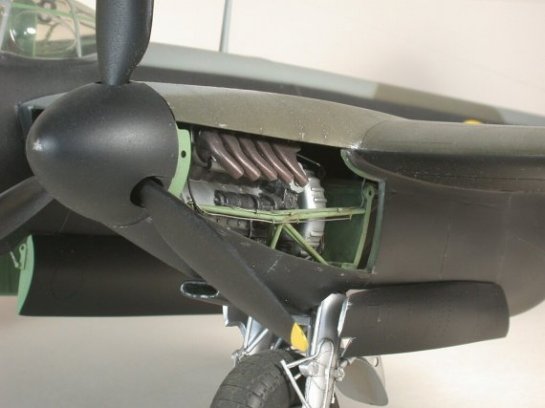
Comments
I originally had some difficulty finding good reference material for the Mosquito, particularly covering the cockpit and interior. Not too long after I had scratch built the interior and buttoned up the fuse, Paragon released their FB Mk VI interior set and SAMI released their Datafile on the Mossie (figures eh!!!). These pointed out some errors in the sources that I used, the net result being that there are some minor inaccuracies built into my example.
In support of this project, I also took a road trip to Ottawa to take some pictures of the Mosquito MkXX that is on display at the Canadian Aviation Museum there. This provided me with a lot of detailed info re. the nacelles and bomb bay. The staff at the museum was excellent and let me "cross the ropes to take pictures. They are posted in the Walkaround section of the Aircraft Resource Center if anyone wants to check them out.
DK 333 was one of the original OBOE equipped Pathfinder Mosquitoes, and the reference material I had of this and other early Pathfinder A/C showed that the forward windows and nose transparency were "blacked out". One shot from the SAMI Datafile also shows an OBOE A/C with what appears to be a small unpainted "porthole" in the flat portion of the nose transparency, so I incorporated that aspect into my DK333 as well.
Overall this was a fun and educational experience for me. I cut my teeth on a lot of new techniques and did more scratch building on DK333 than I had done on any previous model. The fit was nothing to write home about , the end result being a model that weighs about 3 pounds due to all of filler that I had to use on it.. Though I'm sure that I could do a better job on it now that my modelling skills have progressed somewhat, I'm still happy with the end results and enjoy having a 32 Mossie on my shelf.

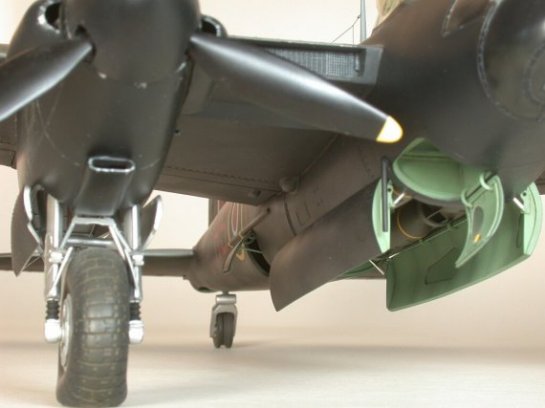
© Wayne Bowman
This article was published on Wednesday, July 20 2011; Last modified on Saturday, May 14 2016
